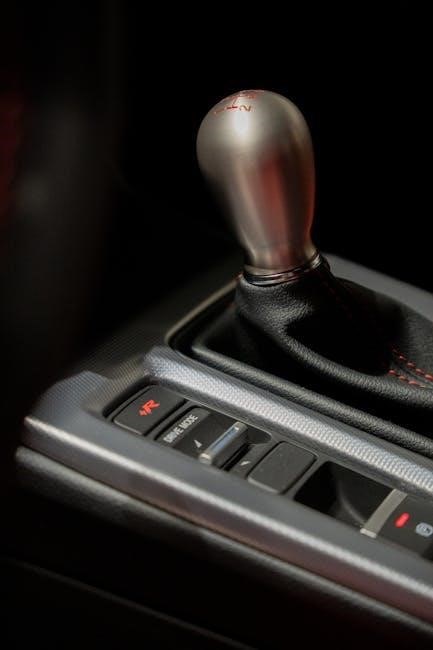
Duramax Manual Transmission Options
For Duramax owners seeking a more engaging driving experience or enhanced control, exploring manual transmission options can be appealing. Swapping to a manual transmission requires careful consideration of compatibility, strength, and overall cost effectiveness.
The allure of a manual transmission in a Duramax truck stems from a desire for greater control and a more direct connection to the powerful diesel engine. While the Allison automatic has been the standard, some enthusiasts explore manual swaps for various reasons, including perceived durability or a preference for traditional driving dynamics. This conversion, however, is not a straightforward bolt-on affair. It involves significant modifications, sourcing the correct parts, and overcoming potential compatibility issues. A successful swap demands meticulous planning, skilled labor, and a thorough understanding of both the Duramax engine and the chosen manual transmission. Furthermore, factors like clutch selection, bellhousing adapters, and custom driveshaft modifications must be addressed to ensure proper functionality and longevity. Despite the challenges, a well-executed manual transmission swap can transform the driving experience of a Duramax, offering a unique blend of power and driver engagement. It’s a project best suited for experienced mechanics or those willing to invest in professional installation.
Understanding the Allison 1000 Automatic Transmission
The Allison 1000 automatic transmission has been the workhorse behind the Duramax diesel engine since its introduction in 2001. Known for its robust design and ability to handle significant torque, the Allison has undergone several iterations, evolving from a 5-speed to a 6-speed configuration. It’s electronically controlled and features adaptive learning capabilities, allowing it to adjust shift patterns based on driving style and load; Despite its strengths, the Allison 1000 is not without limitations. Some owners report torque limiting in lower gears and a perceived lack of smoothness compared to more modern transmissions. Regular maintenance, including fluid changes and filter replacements, is crucial for ensuring the longevity and reliability of the Allison. For those seeking increased performance, aftermarket upgrades are available, ranging from valve body modifications to complete transmission rebuilds with stronger components. Understanding the Allison’s capabilities and limitations is essential for Duramax owners, especially when considering modifications or alternative transmission options.

Considerations for Manual Transmission Conversion
Converting a Duramax from an automatic to a manual transmission involves several key factors. These include identifying a suitable transmission, assessing costs, and ensuring compatibility with the Duramax engine.
Availability of Stronger Transmissions
When contemplating a manual transmission swap for a Duramax, a primary concern is the availability of robust transmissions capable of handling the engine’s torque. Duramax engines are known for their substantial power output, necessitating a transmission that can withstand the stress without failing. Exploring options like heavy-duty aftermarket transmissions or even adapting transmissions from other powerful vehicles becomes crucial. Furthermore, considering the specific torque rating and intended use of the truck is essential for selecting a transmission that ensures longevity and reliability. Factors such as towing capacity, performance goals, and daily driving demands influence the decision-making process. Consulting with transmission specialists and researching online forums dedicated to Duramax modifications can provide valuable insights into available options and their real-world performance. Ultimately, choosing a stronger transmission is an investment in the overall durability and functionality of the modified Duramax.
Cost Implications of a Manual Swap
Undertaking a manual transmission swap in a Duramax truck involves significant cost considerations that extend beyond the price of the transmission itself. Sourcing a suitable manual transmission, potentially a heavy-duty aftermarket unit, represents a major expense. However, the associated costs encompass more than just the transmission purchase. Labor costs for the installation process can be substantial, as the swap often requires custom modifications to the truck’s frame, driveline, and potentially the interior. Additional expenses may arise from acquiring necessary components like a clutch assembly, flywheel, and hydraulic system. Furthermore, modifications to the truck’s computer system might be necessary to ensure proper functioning with the new transmission. Factoring in these diverse costs is crucial for accurately assessing the financial feasibility of a manual transmission swap. A thorough budget encompassing all anticipated expenses helps avoid unexpected financial strain during the project.

Allison Transmission Upgrades
For Duramax owners aiming to enhance the performance and durability of their trucks, several Allison transmission upgrades are available. These upgrades range from rebuild kits to complete, high-performance transmission builds.
ATS Stage 3 Rebuild Kit
The ATS Stage 3 Rebuild Kit presents a proactive solution for Duramax owners looking to bolster their Allison 1000 transmission’s resilience before potential failures occur. This comprehensive kit is designed to enhance the transmission’s ability to withstand increased power and torque levels, which is especially beneficial for modified or heavily used trucks. By installing the ATS Stage 3 kit, owners can preemptively address weaknesses in the stock transmission, ensuring greater reliability and longevity. The kit typically includes upgraded clutches, steels, and seals, all engineered to handle higher stress and heat. Furthermore, this upgrade can offer peace of mind, knowing that the transmission is better equipped to handle demanding driving conditions or increased engine output. Opting for the ATS Stage 3 Rebuild Kit is a strategic investment for Duramax enthusiasts seeking to maximize their truck’s performance and durability.
WCFab 750HP Allison Transmission Builds
WCFab offers robust Allison transmission builds designed to reliably handle up to 750 horsepower, catering to Duramax owners seeking enhanced performance and durability. These transmissions are meticulously built to withstand the rigors of demanding driving conditions, whether it’s daily commuting, heavy towing, or spirited performance. WCFab’s builds incorporate upgraded components and precision engineering, ensuring optimal performance and longevity. These purpose-built transmissions provide confidence and peace of mind, knowing that your Duramax is equipped with a drivetrain capable of handling significant power increases. WCFab focuses on reliability and performance, making their 750HP Allison transmission builds an ideal choice for Duramax owners who demand the best. With a WCFab transmission, drivers can confidently push their trucks to their limits, knowing their drivetrain is built to withstand the added stress and strain.
Stage 4 Allison 1000 (900HP)
The Stage 4 Allison 1000 transmission represents a significant upgrade, engineered to withstand the immense power output of modified Duramax engines, handling up to 900 horsepower. This level of build is designed for enthusiasts pushing the boundaries of performance. It incorporates heavy-duty components, enhanced clutch packs, and optimized fluid dynamics to ensure reliable operation under extreme stress. The Stage 4 build is meticulously assembled, guaranteeing optimal performance and longevity. For Duramax owners seeking to maximize their engine’s potential, this transmission provides the necessary foundation. It allows for confident acceleration and consistent power delivery, even with substantial modifications. Investing in a Stage 4 Allison 1000 provides peace of mind, knowing that your transmission is capable of handling whatever you throw at it. This robust build is a testament to engineering excellence, providing the ultimate solution for high-horsepower Duramax applications.

Automatic vs. Manual: A Comparison
The choice between automatic and manual transmissions in a Duramax comes down to preference and application. Automatics offer smoothness, while manuals provide greater control. Each has distinct advantages.
Smoothness and Torque Limiting
When comparing automatic and manual transmissions for a Duramax, smoothness is a key factor. The Allison automatic transmission, while robust, can sometimes exhibit less refined shifts compared to modern automatics. The newer 10-speed automatics offer significantly smoother transitions and a more comfortable driving experience, especially in daily driving scenarios.
One notable difference lies in torque limiting. Older Allison 5/6-speed automatics often limit torque in first gear to protect the transmission from excessive stress. This torque management can result in a less responsive feel during initial acceleration. Manual transmissions, conversely, provide direct control over torque delivery, potentially allowing for quicker starts and a more engaging driving experience. Drivers prioritizing a smooth and seamless experience might prefer a newer automatic, while those seeking raw power and control could lean towards a manual swap.
Gear Spread Comparison
Gear spread, referring to the ratio difference between the highest and lowest gears, significantly impacts a vehicle’s performance. A wider gear spread offers better acceleration in lower gears and more efficient cruising in higher gears. Modern transmissions, particularly 10-speed automatics, boast a significantly wider gear spread compared to older 5 or 6-speed automatics like the Allison 1000.
This wider spread allows the engine to operate closer to its optimal RPM range more frequently, improving both fuel economy and overall responsiveness. Manual transmissions, depending on the specific model chosen for a Duramax swap, can offer a competitive gear spread. However, achieving a comparable spread to a modern automatic often requires careful selection and potentially aftermarket modifications. Ultimately, the ideal gear spread depends on the intended use of the truck, with wider spreads generally favored for versatile performance.

Duramax Engine and Transmission History
The Duramax engine, paired primarily with the Allison 1000 automatic transmission, has a rich history. Understanding this evolution is crucial when considering transmission upgrades or manual swaps.
Allison 1000 Evolution (5-Speed vs. 6-Speed)
The Allison 1000 automatic transmission has been the standard for Duramax diesel engines since 2001, undergoing moderate changes throughout its lifespan. Initially, a 5-speed version was utilized until the 2005 model year, offering robust performance for the time. In 2006, a significant upgrade occurred with the introduction of the 6-speed Allison 1000.
This evolution provided an additional gear, enhancing fuel efficiency and improving overall drivability. The 6-speed variant allowed for closer gear ratios, resulting in smoother transitions and optimized power delivery. While both versions have proven reliable, the 6-speed is generally favored for its refined performance. Understanding the differences between these two iterations is crucial when considering upgrades or modifications to the Duramax drivetrain. This historical context helps inform decisions regarding transmission builds and overall vehicle performance enhancements.




